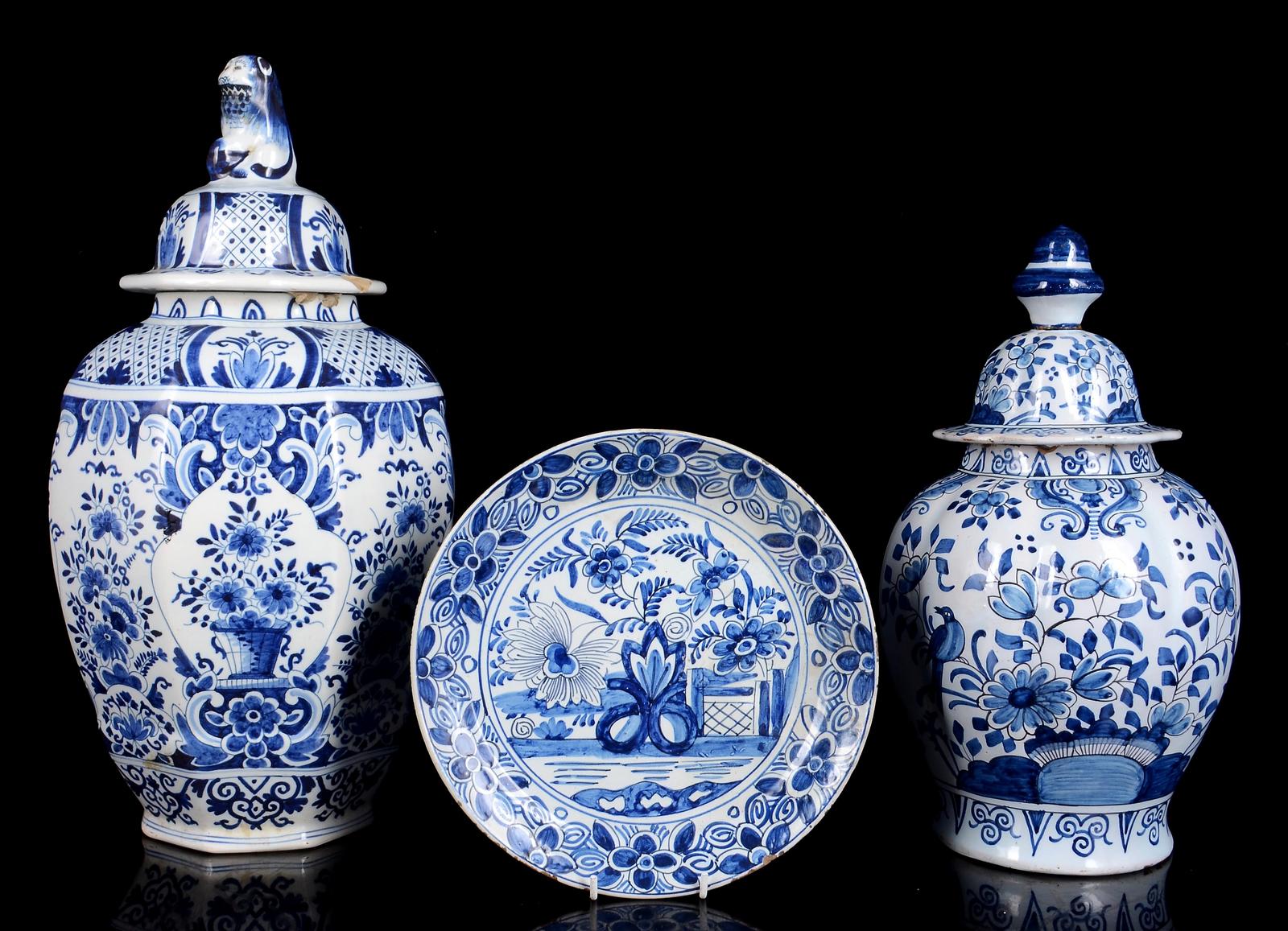Delftware, made between 1620 – 1850
Only tin-glazed earthenware made in Delft between 1620 - 1850 is referred to as traditional Delftware.
Read more
Tin-glazed earthenware
Earthenware with a glaze to which tin oxide has been added to make it opaque white. Delftware produced before 1850 is always covered with a tin glaze.
Read more
Hand-painted
An important characteristic of authentic Delftware is that it is hand-painted. Printing techniques do not occur on this earthenware.
Read more
Unidentified mark
Not all marks found on earthenware have been identified. It could be a ‘new’ Delft mark! But it could also be a mark that was not used in Delft.
Read more
Can not be determined based on current information
To properly assess this object, more information or more or better photos are needed.
Looks to be 18th century Delft! Part of a garniture set and lacking the cover.
Good afternoon Sir, As you will know, my home country South Africa has a rich Dutch history and we are home to a large collection of antique Delft that gathers dust on the shelves and display cabinets of homes across the country. Please help me to identify these pieces
This is the mark of "Chambre des Peintres", workshop in the Boch factory located in La Louvière, Belgium, according to the info on the website of the Royal Boch (current name of the factory), it was started in 1870-s and was operating till 1892, but the production of Delft-inpsired pottery didn't finish in 1892, as based on the catalogue of the factory of 1899, they still offered a large number of items. https://www.royalboch.com/fr/pages/histoire/
the mark can be found here https://www.royalboch.com/fr/pages/marques-et-backstamps/
this looks like De Klauw mark, but I wouldn't know if it's a true one or a fake one. Check out the different variations of this mark here https://delftsaardewerk.nl/merk/een-klauw
Add new comment
Only logged in users can post comments Log in or register to post comments
Reacties 8
Verdict:
Analysis:
Looks to be 18th century Delft! Part of a garniture set and lacking the cover.
Good afternoon Sir, As you will know, my home country South Africa has a rich Dutch history and we are home to a large collection of antique Delft that gathers dust on the shelves and display cabinets of homes across the country. Please help me to identify these pieces
pieces
In reply to (Geen onderwerp) by roneedham
This is the mark of "Chambre des Peintres", workshop in the Boch factory located in La Louvière, Belgium, according to the info on the website of the Royal Boch (current name of the factory), it was started in 1870-s and was operating till 1892, but the production of Delft-inpsired pottery didn't finish in 1892, as based on the catalogue of the factory of 1899, they still offered a large number of items. https://www.royalboch.com/fr/pages/histoire/
the mark can be found here https://www.royalboch.com/fr/pages/marques-et-backstamps/
In reply to (Geen onderwerp) by roneedham
this looks like De Klauw mark, but I wouldn't know if it's a true one or a fake one. Check out the different variations of this mark here https://delftsaardewerk.nl/merk/een-klauw
Add new comment
Only logged in users can post comments
Log in or register to post comments